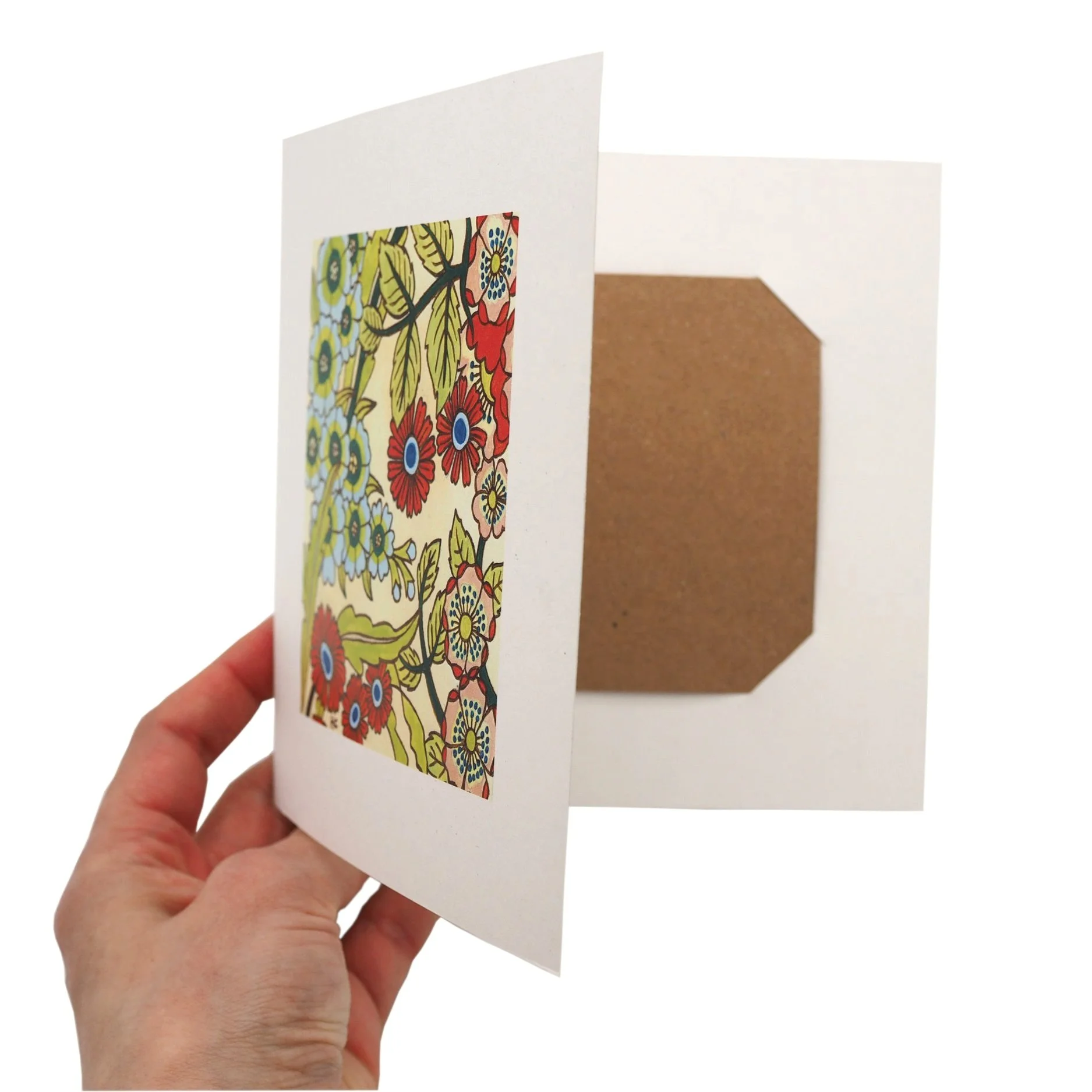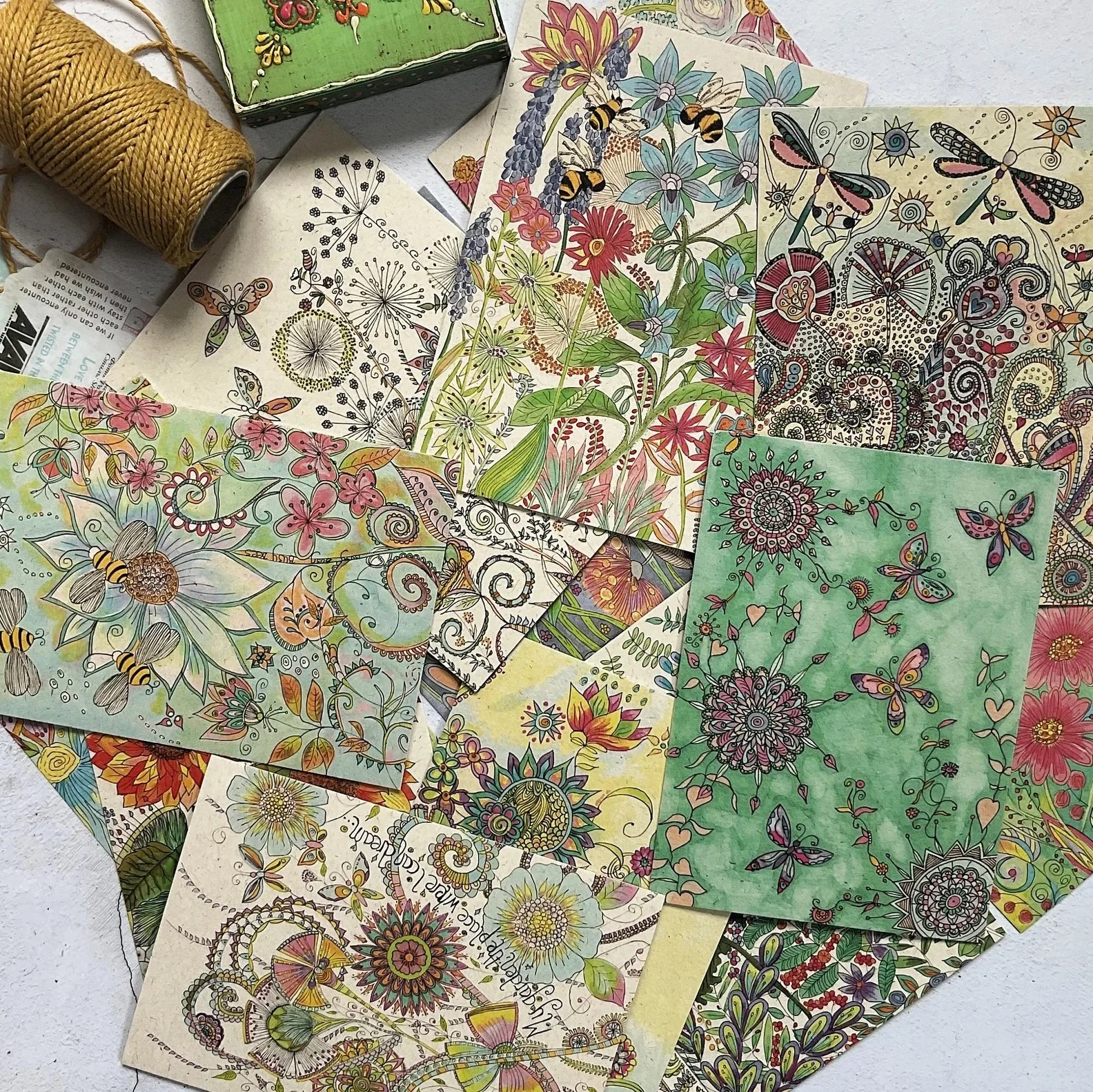Single Use Greetings Cards - Some Eco Alternatives
We have affiliate partnerships with some of the companies featured in this blog post. This means we earn a small commission if you click through to a site from this post and make a purchase. The commission comes from the company, not the purchaser - so clicking through from our blog won’t increase the cost of your purchase. The income from affiliate marketing helps us to fund our blog. All products recommended have been carefully researched to ensure they tally with our sustainability ethos. We will always identify an affiliate link with the marker (aff link).
According to the Greetings Cards Association, the UK exchanged around one billion cards during Christmas 2023. Add in another 800 million-plus birthday cards throughout the year, and we get through nearly two billion single use cards for Christmas and birthdays alone. The total rockets yet further when we factor in cards for Valentine’s Day, Mother’s Day, anniversaries and so on. If the occasion exists, there’s a card to mark it!
Some greetings cards are recyclable, of course. But many contain plastic in the form of glitter, gems, foiling, ribbon and embellishments. These additions make a greetings card unrecyclable unless they are removed. And how many of us find time to do that before tossing a card into the recycling bin? Stats vary on how many cards can’t be recycled, with estimates ranging from 30% to 75%. If we take the midway point of 50%, that means well in excess of a billion cards languishing in landfill or heading for incineration each year. And that’s just in the UK.
Even recycling cards isn’t ideal. Although the energy used is only around 50% of that needed to manufacture new paper, the process still carries a carbon footprint. Paper also can’t be recycled indefinitely. This means that virgin pulp from newly felled trees has to be constantly introduced to replenish card stocks.
Before we come across as killjoys, we’re not saying ‘don’t ever send another greetings card’! We’re also not suggesting that you shouldn’t mark events and occasions. Letting friends and family know you are thinking of them definitely helps the world go round. Nevertheless, if we all cut down on single use cards, we could make quite a difference to the numbers that get dumped each year.
Which got us thinking… How can we replace the traditional single use card with something just as meaningful, but a lot more eco? What are some more sustainable alternatives? And can we come up with some possibilities that are even more special than a carefully chosen card?
Here’s what we found…
Reusable cards
Any single use item raises questions over sustainability - and the greetings card is no exception. While fabric furoshiki solves the problem of gift wrap waste, we also wanted to address the issue of single use cards. And so the RAPPU reusable greetings card was born!
In order to make them reusable, our greetings cards have been designed with removable inserts. Once the card is finished with, the old insert can be taken out and replaced by a fresh blank. This allows the card to be passed along to someone else.
We offer two options - the hand embroidered fabric collection and the eco printed collection. The fabric collection is made from reclaimed fabric scraps and vintage thread. We also add Japanese glass seed beads to create a bit of plastic-free sparkle. The eco printed collection is inspired by fabric designs and uses our own original artwork. The card for both collections is made from 100% recycled pulp.
Other than our Christmas card range, we deliberately don’t create themed cards. This means that each card can be reused for any occasion. Apart from being sustainable, the card’s reusability saves the recipient having to race to the shops when they next need a card. We think of them as ‘the cards that keep on greeting!’ Check out what we have in stock here.
Edible cards
An edible card can double up as both present and card. Buying less stuff is always a good sustainability strategy - and why spend cash on a present and a card, when one purchase will cover both? The only issue with edible cards such as message cakes and biscuits is the carbon footprint they create. The manufacture of food items can be quite energy heavy. When you also factor in packaging, you need to check that you don’t end up with a worse sustainability profile overall.
One way round this is to buy your edible card from a company with sound eco credentials. Award winning chocolatiers Chococo is a good one to try. Based in Dorset, their sustainably sourced and very delicious personalised message bars make the perfect edible card. Both milk and dark chocolate bars are available, with the message piped in white chocolate. Choose between ‘happy birthday’ plus name, or your own message up to 25 characters. See what they have available and order your personalised bars here (aff link). It’s also well worth checking out their impressive and interesting sustainable sourcing ethos (aff link).
Eco friendly postcards
If you want cards that can be displayed on the mantelpiece, but also wish to cut down on waste, consider postcards. They don’t require an envelope and use less than half the amount of cardstock compared to most folded greetings cards. They are also unlikely to be embellished with plastic and - the icing on the cake - they are mostly sold unpackaged.
To keep your postcard as sustainable as possible, look out for cards made from recycled paper. We love these pretty floral pen and ink postcard sets from KittyJaneDesigns. Printed onto 100% recycled straw card, they have a flecked and textured finish and come wrapped in recycled tissue. Another option is to search for vintage art postcards in charity shops or online from Etsy and eBay. If buying vintage cards online, just make sure you include ‘unused’ in your search terms!
Plantable cards
Plantable cards can literally be planted. Made from paper embedded with seeds, they are 100% biodegradable. This means that they break down in soil without producing any toxic chemicals. Plantable cards are a novel way of keeping used greetings cards out of landfill or the recycling. plant. The idea of an old card metamorphosing into real, live flowers only adds to the appeal.
Nowadays, plantable cards crop up (no pun intended!) all over the place. One of the best sources is The Seed Card Company. Apart from using cardstock made from post-consumer waste and wildflower seeds, all parts of the manufacturing process are as sustainable as possible - see their ‘eco stuff’ round up here. Their cards cover just about every occasion and they also sell blank seed cardstock so you can make your own plantable creations. Check out their collection here.
E-cards
With the growth of technology, e-cards have become increasingly popular. E-cards create no direct or visible waste, which makes them a good alternative to single use cards. We should not, however, fall into the trap of assuming they carry no carbon footprint. Creating and sending electronic messages does require energy - and the larger files needed for e-cards use considerably more than a simple email. Nevertheless, according to a 2014 study cited by IT consultancy Heliocentrix, e-card carbon emissions compare well with paper cards. Even a complex e-card comes in at around 50g of carbon from start to finish, as opposed to 140g for an unrecyclable greetings card.
Another advantage of e-cards is the price. They are either free or much cheaper than paper cards - particularly when you add in the cost of a stamp. Although often criticised for being impersonal, some e-cards allow you to write your own extensive personal message.
One such example is the company we ourselves use, Jacquie Lawson Cards. They offer a huge amount of choice and both artwork and animation are good quality. Jacquie Lawson offers a subscription service with the option of a month (£5), a year (£24) or two years (£36). For that you can email or text as many cards as you wish. The site also allows you to create an address book and sends you event reminders - handy if you tend to forget birthdays or anniversaries.
Envelopes
With our sustainability lens focused on the card, it’s easy to forget that envelopes are part of the overall package. For every card, there will be an envelope. And while not as paper heavy as the card, nor likely to contain plastic, they still add up to a lot of single use paper waste. Yes, they can mostly be recycled - but ‘refuse’ and ‘reuse’ are always preferable to ‘recycle’.
Within the ‘refuse’ category, you can avoid envelopes altogether by sending postcards or e-cards. You can also slide a small card under the knot of a furoshiki wrapped gift - again, negating the need for an envelope. When it comes to reusing, you don’t have to write someone’s name on an envelope if you are handing it straight to them. Alternatively, use a label on an old envelope, saving the card’s pristine envelope for another occasion. No need to worry about sticking down the envelope, either - just tuck the flap inside the opening.
Yet another option, and one that is fully reusable, is the RAPPU fabric envelope. Sustainably made from unbleached organic calico and organic cotton thread, the envelope comes in two sizes to fit our cards. Each time the envelope is used, a new name tag can be wound round the eco friendly button closure. They are also great for making a cash or voucher gift seem a little more special. Check them out here.
So there you have it… some suggestions for cutting down on single use card waste.
Do you have any more ideas?
Let us know in the comments below.
And if you still need convincing about the environmental impact of sending traditional cards, check out this brilliant infographic… It’s something of an eye-opener!







